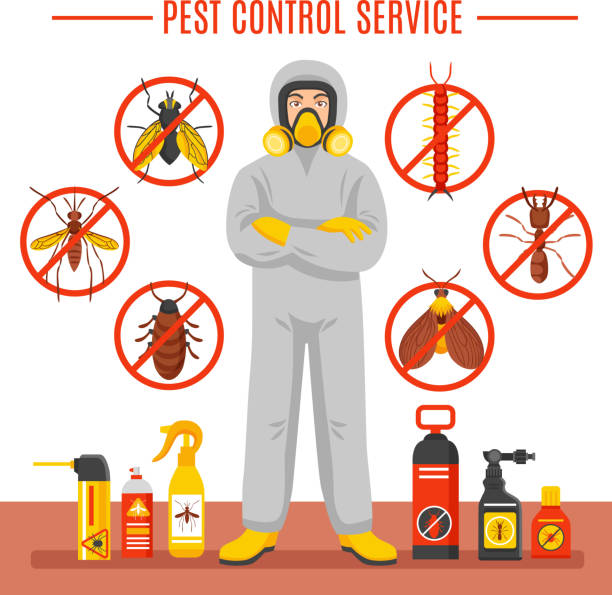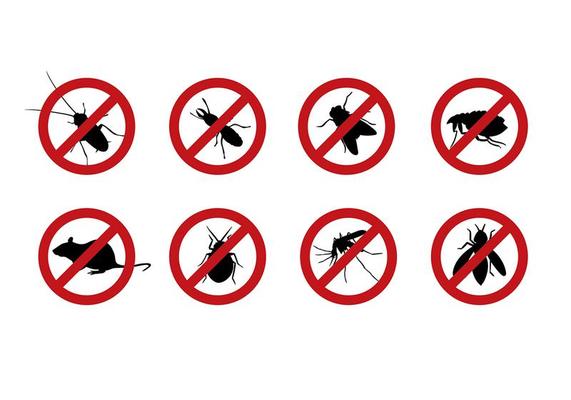Expert Pest and Rodent Removal by Pest Control Lockhart
Expert Pest and Rodent Removal by Pest Control Lockhart
Blog Article
Discovering Invasion and Treatment Strategies worldwide of Pest Control
The landscape of insect control incorporates a myriad of obstacles, specifically as invasions of typical home insects proceed to advance. By incorporating preventive steps with innovative management techniques, such as Integrated Bug Management (IPM), home owners can much better guard their atmospheres.

Typical Home Vermin
When it concerns handling our living spaces, comprehending usual home parasites is vital. These pests not just interrupt our convenience however can likewise present health and wellness risks and damages home. The most common family bugs include ants, cockroaches, rats, termites, and bed pests.
Ants, frequently seen foraging in kitchen areas, can infect food and develop big nests. Rats, including computer mice and rats, can create architectural damages and lug conditions like hantavirus and salmonella.
Acknowledging the indicators of these parasites, such as droppings, nests, or attack marks, is crucial for very early intervention (Pest Control Lockhart). Appropriate sanitation methods, securing entrance points, and keeping a clutter-free setting are reliable preventative measures. By identifying these typical home insects and recognizing their habits, house owners can take aggressive actions to alleviate problems, making sure a much healthier living atmosphere
Understanding Parasite Infestations
Parasite problems can intensify promptly, transforming a small aggravation into a considerable trouble if not addressed without delay. Recognizing the nature of these invasions is critical for reliable monitoring. Insects can attack household and industrial areas for various reasons, including the look for food, sanctuary, or reproducing grounds. Usual elements contributing to invasions include bad hygiene, structural susceptabilities, and seasonal changes that drive bugs inside.
Determining the kind of pest is important, as different varieties exhibit diverse habits and reproductive rates. As an example, rats might develop nests in concealed areas while bugs like roaches flourish in moist atmospheres. Early detection often rests on acknowledging indicators such as droppings, gnaw marks, or unusual audios, which can show a trouble before it becomes serious.
Ecological conditions also play a vital role in parasite proliferation. Warm, damp climates can promote the fast development of bug populations, while modifications in landscape design or construction can accidentally develop favorable settings. Routine inspections and preventative actions are critical to minimizing the threat of problems. An educated technique to recognizing these dynamics prepares for effective bug management approaches in the future.
Treatment Techniques and Strategies
Reliable therapy approaches and strategies are necessary for mitigating pest infestations and recovering a safe environment. A complex strategy is commonly best, including chemical, biological, and mechanical techniques tailored to the specific parasite and the seriousness of the problem.
Chemical treatments consist of making use of pesticides and herbicides, which can properly get rid of parasites. Proper application and adherence to safety guidelines are important to minimize threats to human beings and non-target organisms. Integrated Insect Monitoring (IPM) encourages the judicious use chemicals as a last hope, relying instead on tracking and threshold degrees to figure out treatment requirements.
Organic control techniques include introducing all-natural predators or bloodsuckers to reduce pest populaces. This approach is significantly popular, specifically in farming settings, as it advertises environmental sustainability.
Mechanical methods, such as catches and obstacles, offer prompt remedy for parasites without introducing chemicals. Choices include sticky catches for insects or physical barriers for rodents.
Eventually, the selection of therapy method must take into consideration the particular parasite, the environment, and prospective impacts on human health and wellness and communities. A balanced combination of these approaches can efficiently take care of infestations while promoting long-lasting pest control remedies.
Preventive Actions for House
Proactively addressing bug problems before they escalate is essential for keeping a healthy home setting (Pest Control Lockhart). Carrying out efficient preventive measures can considerably minimize the likelihood of invasions, ultimately guarding both your residential or commercial property and health

Appropriate landscaping likewise plays a vital function in prevention. Keeping shrubs and trees cut you could try this out away from your home minimizes the chances of pests finding their method indoors. Make sure that drain systems are working successfully to protect against standing water, which can attract in mosquitoes and various other insects.
Last but not least, routine assessments are advisable. Routinely looking for indicators of pest task permits early treatment. By embracing these safety nets, house owners can create an atmosphere that is much less congenial to bugs, thereby enhancing their overall quality of life and reducing the need for substantial pest control treatments.
Industrial Bug Control Techniques
A comprehensive method to commercial parasite control is crucial for businesses intending to keep a risk-free and sanitary environment. Reliable techniques include a combination of regular examinations, worker training, and the application of Integrated Bug Administration (IPM) techniques.
Regular evaluations allow very early detection of parasite activity, permitting prompt intervention. description Services should establish a routine schedule for these evaluations, concentrating on high-risk areas such as kitchen areas, storage space spaces, and garbage disposal websites. Staff member training is equally vital; staff ought to be educated on the indicators of bug problems and the significance of reporting them right away.
Applying IPM techniques aids reduce insect problems sustainably. This includes habitat adjustment, such as sealing access factors and reducing mess, in addition to using all-natural deterrents prior to considering chemical treatments.

Additionally, collaborating with a qualified insect control provider ensures accessibility to professional expertise and innovative treatment options. This partnership can lead to tailored bug control prepares customized to the particular demands of business, minimizing risks and boosting total efficacy. Eventually, a positive and enlightened strategy cultivates a pest-free environment, securing both public health and service reputation.
Conclusion
Finally, efficient parasite control demands a thorough understanding of common house bugs and their behaviors, coupled with targeted treatment approaches. Implementing safety nets along with treatment approaches such as Integrated Parasite Administration and biological control enhances the capability to minimize problems. Regular evaluations and a mix of chemical and mechanical solutions better add to preserving pest-free settings. Inevitably, a well-shaped strategy to pest monitoring is essential for safeguarding living areas from undesirable intruders.
Report this page